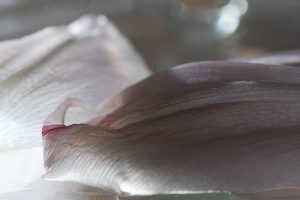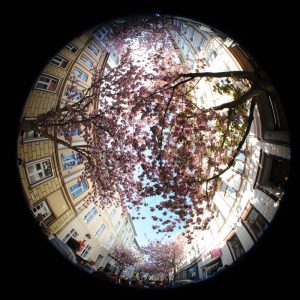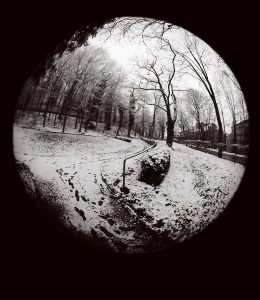Just one lens….
A good photograph, for me, is all about ‘the glass’. By this I mean that the lens is crucial to a good photo. An image taken through a badly built lens, or one that is scratched or dirty, will never be as perfect as the one taken with a good lens. Quality counts.
Quality for me, means good quality glass. The main thing a lens must do is produce a sharp focus. Of course there are many other important characteristics, like the shape of the elements in out-of-focus background (bokeh). But a sharp lens of any length is a tool for excellent photographs.
Prime lenses
I am a fan of fixed-length lenses, known as ‘primes‘. A lens that zooms in and out may seem to be more flexible and therefore a better tool to create the exact composition you want. Others have already pointed out that the photographer might simply move to create the right composition. If a 50mm prime was good enough for Henri Cartier-Bresson, it is good enough for me. There is a beautiful simplicity to photo expeditions with one single prime lens (and a lighter backpack).
There is also a simplicity to photography with a 50mm lens, which is that it records the world around us with the same visual proportions as our own vision. I am referring to internal perspective, or the space between elements of the scene, such as between the furniture in a room. A long lens ‘squashes’ the furniture together slightly. (I love the effect of this in a young forest: making an image with a long lens (300mm, for example), makes the trees look much closer to one another than they seem to my eyes.) And a short lens will record elements that look farther away from one another than our eyes perceive. In contrast, a photograph made with a 50mm lens shows us what the photographer saw.
Fisheye composition
Art is about showing what you see, and about creation. Our cameras cannot record everything we see. One example is the breadth of light wavelengths which cameras can record. Cameras can record less than the human eye in a single scene. This is why a lovely scene of sunshine dappling a forest floor, can result in a photograph that misses the beauty. The sun is too white, or the shadows too black, because the camera cannot record the whole breadth of light that we see. This can be remedied slightly with a polarising filter, which can be described as helping in the same way
that sunglasses help human eyes on an overly bright day.
I have recently been using my fisheye lens during every outing. This lens captures a hemisphere – a full 180º of the field of vision. (It can be hard to avoid including one’s feet!). The depth of field is long, giving sharpness to much of a scene. That a hemisphere is forced into a flat circle, means that lines are distorted, especially around the edges. The distortion varied across the hemiphere, resulting in very different images with a slight movement of the camera. It is a lot of fun to try – and the images are excitingly different!
The fisheye series can be purchased as archival inkjet prints on Kozo paper made from mulberry trees. You can read about this project on my BosbeerPhotos website, or get in touch to discuss the project.


